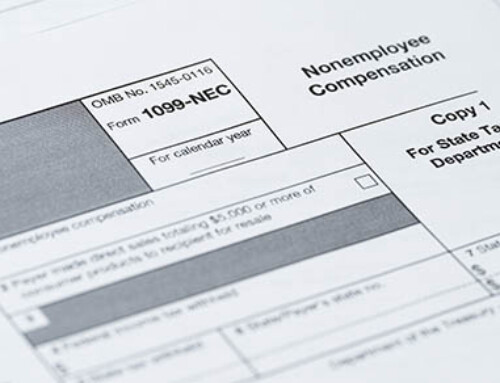
Congress just gift-wrapped a 1,000-plus-page “One Big Beautiful Bill Act” (yes, that’s the real name) and sent it to President Trump for signature on July 4th (because nothing says “patriotic” like a 900-plus-page tax law.). Fireworks ensued, literally and legislatively. Below is the quick-and-casual download on the provisions our clients are most likely to feel—whether you’re filing as an individual, running a business, or both.
Key Changes for Individuals
- Bigger, permanent standard deduction and TCJA-era brackets – Beginning in 2026, the deduction rises to $15,750 (single) and $31,500 (joint) while today’s lower rates stick around. Most filers will see more income sheltered from tax without having to itemize.
- SALT cap balloons to $40,000 for 2025-2029 – High-tax-state residents can deduct up to four times more in property and state income taxes for five years. Plan to prepay or “bunch” taxes during this window to maximize savings before the cap snaps back.
- New $6,000 “senior deduction” (ages 65+) – Available 2025-2028 on top of the standard deduction. Retirees may owe less federal tax even if their income stays level.
- Child Tax Credit increases to $2,200 and is indexed for inflation – With the refundable portion locked at $1,700. Families should revisit withholding so they’re not giving Uncle Sam an interest-free loan.
- Estate & gift exemption rockets to $15 million per person in 2026 – Wealthy families have a fresh planning window for lifetime gifts, trusts, and dynasty strategies.
- “No-Tax-on-Tips” deduction up to $25,000 (2025-2028) – Service-industry employees can keep more of what they earn; accurate tip tracking is critical.
- Overtime-pay write-off up to $12,500 ($25,000 MFJ) for 2025-2028 – Hourly workers can soften the tax bite of those extra shifts.
- Mortgage-insurance premiums treated as mortgage interest again – Homebuyers with less than 20 % down regain a deduction they lost in recent years.
- Student-loan forgiveness for death or disability stays tax-free permanently – Borrowers (or their estates) avoid a surprise tax bill at an already difficult time.
- Car-loan interest deduction (up to $10,000) on U.S.-made vehicles, 2025-2028 – Commuters and sole proprietors financing a new ride can trim their tax bill while upgrading wheels.
Key Changes for Businesses
- Section 199A/QBI 20 % deduction made permanent with wider phase-in bands – Owners of pass-through entities gain long-term certainty when projecting taxable income.
- Section 179 expensing limit lifts to $2.5 million (phase-out at $4 million) – Midsize companies can fully deduct more equipment in the year of purchase, improving cash flow.
- 100 % bonus depreciation extended through 2030 – Big-ticket machinery, technology, or certain vehicles placed in service after 1-19-25 may be written off in year one instead of over multiple years.
- Immediate write-off of domestic R&D costs (retroactive to 2022 for small firms) – Innovative companies regain a crucial deduction and may file amended returns for refunds.
- Paid Family & Medical Leave credit becomes permanent and now covers insurance premiums – Employers get a predictable credit while supporting employees’ life events.
- Meals provided for employer convenience fully deductible again – Businesses with on-site cafeterias or late-shift pizza runs can expense the full cost.
- Advanced-manufacturing investment credit climbs to 35 % – Manufacturers in qualifying sectors can offset more tax as they modernize production lines.
- Employer child-care credit increases to 40 % (50 % for eligible small businesses) – Firms offering on-site or contracted child care can defray a larger chunk of those costs.
Planning Moves to Consider
- Bunch deductions like SALT or charitable gifts while the standard deduction is high and the $40k SALT cap is open.
- Re-run payroll withholdings so bigger credits and deductions don’t lead to a surprise refund next spring.
- Schedule equipment and R&D spending after January 19, 2025 to leverage bonus depreciation and full expensing—and contact us if you have R&D expenses from 2022-2024 that were capitalized to discuss whether amended returns or a change in accounting method could unlock a refund.
- Refresh estate documents before the $15 million exemption arrives; many existing trusts and gifting plans will need tweaks.
- Document tips, overtime, and vehicle loans meticulously so you can claim the new deductions without audit headaches.
Bottom line: OBBB keeps popular TCJA cuts alive, sprinkles in headline-grabbing worker deductions, and hands businesses new incentives to invest. Some provisions are permanent, many sunset, and a few (looking at you, spaceport bonds) are just plain quirky. It’s a big deal—beautiful or otherwise—and every taxpayer’s situation is unique. Give your Linkenheimer LLP advisor a a call before you start celebrating with a 100 %-bonus-depreciated margarita machine.
Questions? We’re here to translate Congressional confetti into actionable advice—without the paper cuts.






Leave A Comment